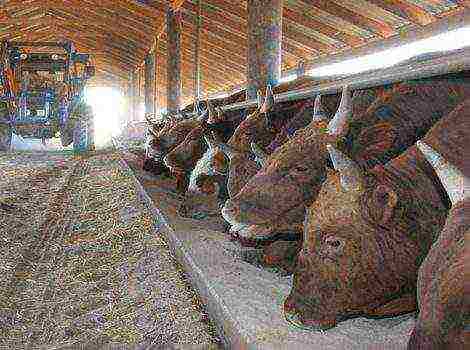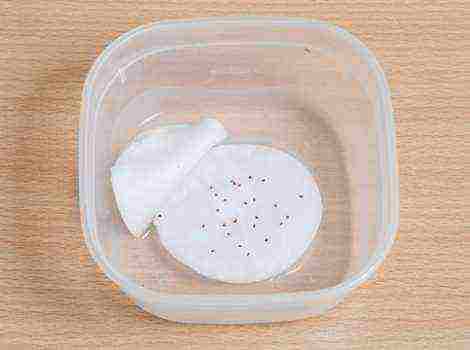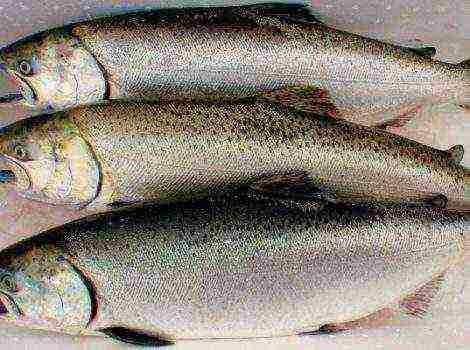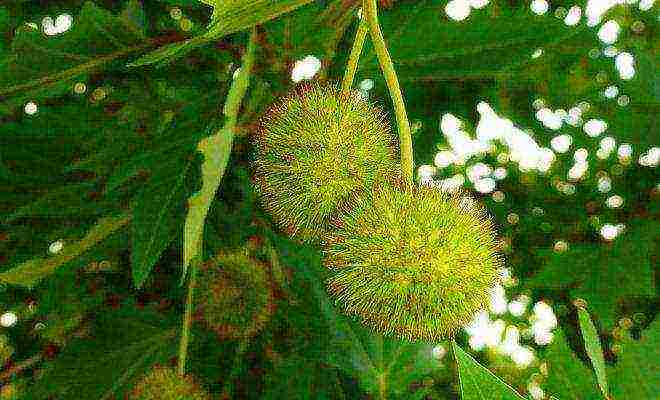
Edible (noble) chestnut is a rather thermophilic culture. It grows in southern Europe, the Caucasus or the Black Sea coast.
Grow an edible chestnut in the middle lane it is possible, but it is important to observe certain conditions.
Optimal conditions for cultivation
Edible chestnuts need an abundance of sunlight, so the southern parts of the garden, reliably protected from the wind, will be the ideal place for planting them. This culture prefers slightly acidic sandy soils or sandy loams. The optimum acidity is 6-6.5 pH. Heavy alkaline soil, with excess or stagnant moisture, is detrimental to an edible chestnut.
Ideal temperature conditions for the growth and fruiting of a tree: in summer up to 35 ° С, in winter - short-term frosts down to -15 ° С. Acclimatized sowing chestnut varieties able to withstand temperatures as low as -28 ° C.
Types of edible chestnuts
In the middle lane, the following types of edible chestnut are grown:
- American or dentate (Castanea dentata);
- Japanese (Crenata);
- Sowing (Sativa);
- Chinese (Mollisima).
American chestnut has good frost resistance, it is able to withstand frosts down to -27 ° C. This species is characterized by rapid and intensive growth, up to 1 m per season.
In comparison with the Serrated (American), the Sowing chestnut is more widespread and gives large and very tasty fruits, but it loses significantly in frost resistance. A critical drop in temperature for the Sowing Chestnut to -18 ° C.
Japanese chestnut is distinguished by its short stature (height 10-15 m). It is able to withstand frosts down to -25 ° C, as well as severe drought. Its fruits are very tasty and tender, but small enough.
The Chinese chestnut is harvested and produces lovely sweet, medium-sized fruits. It tolerates well the winter temperature drop to -20 ° C and is resistant to many diseases that are detrimental to other types of edible chestnut.
All these types of noble chestnuts can be successfully grown in the middle climatic zone. But it is worth noting that even acclimatized plants still "freeze" in especially harsh winters, and, as a result, the flowering and fruiting of such damaged trees is significantly reduced.
Care features
Adult chestnut tree does not need the constant presence of moisture, therefore, it is watered only in especially dry summer periods. But young seedlings should be watered abundantly and regularly, as the soil dries out. This maintenance will allow young chestnuts to develop a strong root system in a shorter period of time.
The soil around the tree is piled up 1-2 times per season, and with the arrival of cold snaps, mulch is introduced into the trunk circle with a layer of 13-15 cm. For these purposes, fallen leaves (needles) or peat are used. It is better to refuse traditional sawdust, as they acidify the soil too much.
Pruning edible chestnut produced in early spring, before the buds of the tree are awake. To form a lush and spreading crown, the upper branches of the plant are shortened by 1/3 of the length. They also remove improperly growing (inside the crown) and twigs that have frozen over the winter.
Fertilize an adult noble chestnut Once a year, after spring pruning. Ammonium nitrate (25 g), mullein (900 g), urea (10-12 g), complex mineral fertilizers (nitrogen / potassium / phosphorus, 20-25 g) are diluted in 15 liters of water.
For a deeper penetration of top dressing into the soil, small wells with a depth of 30-40 cm are made in the near-trunk circle. It is in them that fertilizers are applied.
Growing an edible chestnut in the middle lane - it is, of course, troublesome. But it's worth it, because in response to the care, the tree will delight you with delicious fruits every year.
It is known that Edible Chestnut grows well in the North Caucasus.The younger brother of my wife has repeatedly sent us edible chestnuts in the fall, collected by him with his own hand.
Since Kashtan can withstand frosts up to 32 degrees, there is hope, in my opinion, for its cultivation up to the latitude of St. Petersburg.
For lovers of beauty and a healthy lifestyle, I advise you to pay attention to the chestnut. Chestnut is a wonderful decorator of our gardens and an excellent healer for our souls and bodies.
Why do I say that? Yes, because direct contact with chestnut can well charge you with vigor for the whole day, and its fruits are unusually beneficial for health.
Tasty nuts of edible chestnuts are used to prepare many different dishes, and the inedible fruits of horse chestnuts have been used since ancient times in folk medicine.
Edible chestnut
To begin with, let us clarify that trees beautifully blooming with candles in parks and on city streets are usually not the chestnut at all, which is discussed in this article, but a horse chestnut with inedible (but medicinal) fruits.
Despite some similarities with the edible chestnut, these trees belong to different species and even families. The chestnut belongs to the Beech family, and the horse chestnut belongs to the Horse-chestnut family. In what follows, we will focus on the edible chestnut.
The height of the chestnut varies from 1 to 35 m, depending on the species and variety. The chestnut blooms very beautifully. Its pyramidal inflorescences will brighten your garden from late May to mid-July.
Chestnut nuts
Chestnut fruits are enclosed in cozy shells protected by thorns. During the ripening period, the shells open and give us delicious fruits. Each shell contains from 1 to 3 nuts.
Chestnuts bloom and bear fruit beautifully in the gardens and parks of southern and central Russia. They are considered "solar trees" because they "absorb" the energy of the sun and prefer open sunny places.
Chestnut trees are bright individualists. No matter how hard you try, nothing will grow under them, because the chestnut creates a very thick shadow, and its powerful superficial roots prevent other crops from developing successfully.
But this disadvantage can easily be turned into a virtue. You can install garden benches under the chestnut tree, where on hot summer days it will be nice to hide from the scorching rays of the sun.
Planting chestnuts
When planting chestnuts, keep in mind that a place of at least 3 m in diameter (or even more) should be allocated for each seedling. Only in this case, an adult tree will delight you with a spreading crown, abundant flowering and good fruiting.
Chestnut prefers loamy leached chernozem. It is unpretentious to winds, air pollution and is quite frost-resistant.
Planting chestnut seedlings
It is most convenient to plant chestnuts with 1-2-year-old seedlings. To do this, prepare square holes measuring 50x50x50 cm.
Mix the ground removed from the pits with humus and sand in the ratio: 2: 1: 1 and add 0.5 kg of dolomite flour and slaked lime; pour 200 g of nitrogen-phosphorus-potassium fertilizer into each hole.
At the bottom of the holes, lay a drainage layer (pebbles or crushed stone, mixed with sand) 10-15 cm high.Then sprinkle the drainage layer with a soil substrate, spill the hole well with water, place a seedling in it and carefully fill the hole with soil, tamping it slightly with your hands.
Raise the landing mound 15-20 cm above the soil level, because it is necessary to take into account the subsidence of the soil.
When planting large chestnuts, place the root collar of the seedling 8-10 cm above the level of the planting mound. Seedlings of low and medium-tall varieties of chestnut do not need to be overestimated.
Attach the seedlings to a support to avoid damage during strong winds. After planting, you need to water the plant abundantly with warm water.
Planting chestnut seeds in autumn
Chestnut seeds (nuts) germinate well in the open field even without our intervention, so planting chestnut seeds will not be difficult.
To do this, collect the fallen nuts in the fall and carry out the stratification procedure (holding in the cold).To do this, put the chestnut nuts in an open box, sprinkle with sand and refrigerate or in the basement for 10-12 days.
Optimum temperature for stratification: + 5-6 ° С. Then you can place the seeds in open ground.
Prepare and spill well the grooves with water in the place where the chestnuts were planted and deepen them by 5-6 cm.
Place nut seeds in the grooves at a distance of 10-15 cm from each other, then fill them with fallen leaves (no need to bury). That's it - the chestnut seeds are ready for wintering, and in the spring you will see green shoots, then you just have to thin out the seedlings, leaving the most powerful plants.
Planting chestnut seeds in spring
Fruits that have fallen in autumn should be covered with sand and stored all winter at a temperature of + 5-6 ° C, and before spring planting in open ground for 5 days, place them in warm water, then the shell of the fruit will swell, and an embryo will form inside.
Then plant chestnut seeds in your favorite spot in the country. With such cultivation, one-year-old chestnuts will grow by 20-25 cm in a year, and at the age of five they grow up to 3 m in height.
Chestnut care
2-3 times per season, the land around the chestnut must be loosened and the plant watered as needed. In the fall, the near-stem circle is mulched by 10-12 cm with fallen leaves, peat or sawdust.
And if you want to see a lush, spreading crown near your chestnuts, in early spring make a shortening haircut for the growing trees: cut the upper branches of the plant by ¼ of the length.
Fertilize chestnuts once a year - in early spring. To do this, in a 15-liter bucket, dilute ammonium nitrate - 20 g, mullein (fresh manure) - 1 kg, 20 g of nitrogen-phosphorus-potassium fertilizer and 15 g of urea.
Types of edible chestnuts
In nature, there are just over 30 species of chestnut trees and shrubs. Here are several types of chestnut trees, the fruits of which are eaten.
European sowing chestnut
Sowing chestnut is a noble slender tree up to 35 m high with a regular ovoid crown. Leaves are large lanceolate, 25-30 cm long. Inflorescences are spicate, lush, light yellow.
Nuts are large, edible, enclosed in a round fluffy cocoon. Sowing chestnut is a long-liver, under favorable conditions it can live in one place for up to 500 years, and in natural conditions - even longer.
Chinese chestnut is the softest
The softest Chinese chestnut is a beautiful tree up to 15 m high, with spreading branches and finely toothed leaves with a whitish pubescence below.
Fluffy, horizontally standing inflorescences come in a variety of colors, depending on the variety. Chinese chestnuts are famous for their unsurpassed taste and are widely used in food.
Japanese chestnut, or crenate
Originally from Japan, China and Korea. It grows quickly and begins to bear fruit early - 2-4 years after planting. The fruits are the largest among edible chestnuts, up to 6 cm in diameter and up to 80 g in weight. In Japan, more than 100 varieties have been bred with tasty and large nuts.
Among summer residents, gardeners, for decorative qualities, horse chestnut is valued more than edible. Its luxurious crown, strewn with lush candlesticks of inflorescences, is simply breathtaking and you want to admire this magnificent creation of nature again and again.
Unfortunately, there is no clear information about the frost resistance of different types of Edible Chestnuts - you will have to look for additional information and experiment with planting different types.
I invite everyone to speak out in Comments... I approve and welcome the criticism and exchange of experience. In good comments, I keep the link to the author's site!
And do not forget, please, to click on the social media buttons, which are located under the text of each page of the site.
Continuation here…
Edible chestnut.
Chestnut is a tall, beautiful tree, only few know that edible chestnut blooms differently than inedible and it is shorter in stature. The flowers of the edible chestnut look more like the flowers of the walnut, such pods. The taste of edible chestnuts is preferred by many people raw more than fried.Sometimes they are confused with horse chestnuts, but horse chestnuts are impossible to taste bitter, you will not and cannot eat them, they are considered poisonous.
From edibles, as well as from nuts, various dishes are prepared: soufflés and desserts, they are stuffed with confectionery. The fruits are high in fiber and low in fat, high in minerals and tannins.
If during the winter the fruits of the chestnut have dried up, have dried up excessively, then it is already useless to germinate them, nothing will grow. Normal storage of seeds during the winter provides a process called stratification. This is the placement of fruits in damp sand and in the refrigerator for a long time.
In the Moscow region, with proper care, you can grow edible fruits of different varieties. The tree will need additional protection in winter, well-drained, non-poor soil and a specific level of moisture.
The most common types of edible chestnuts grown in Russia are:
Japanese chestnut;
the softest Chinese chestnut;
sowing chestnut European.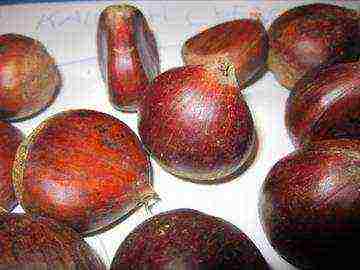

|
Rare woody Viburnum rhytidophyllum - wrinkled viburnum. With our climate, every evergreen deciduous tree deserves close attention. The Americans give this Kalina the 4th zone. It makes sense to try it with us. This viburnum is declared in the GBS collection. It seems that it grows and blooms there. They say that it grows very quickly. Is it true? Does anyone have any experience with growing this plant? |
Search by topic >>
|
1 Castanea mollissima - the softest chestnut - a real chestnut, in contrast to the horse chestnut, which belongs not only to a different genus, but also to a completely different family. Thanks in advance to everyone who answered! |
|
2 Maybe someone grows a whitish sassafras, a blunt-bladed lindera (and maybe other species), please share your experience. Maybe someone sowed - how about germination / survival rate? |
|
3 Svetlana Bulycheva, Svetlana, I have been growing wrinkled viburnum for the 4th year. The most gorgeous plant! For the last 2 winters, this evergreen viburnum has lost almost all the leaves and buds that it has been laying in the fall. Apparently, this pattern will repeat itself this year. But the shoots are preserved and new fresh leaves grow from the axils of dried leaves (which have to be cut off with a pruner - they themselves do not fall for a long time). Here it is: Growing really fast. The growth of shoots is half a meter or more.
|
|
5 This viburnum has a hybrid with Viburnum x rhytidophylloides, and in particular the 'Alleghany' variety, which is semi-evergreen and more winter hardy. Here it would be ... There is enough information about him on the Internet.
|
|
6 Milyaev, we will try with viburnum. If it loses all the leaves, then, in practice, it turns out that it is "semi-evergreen" ... Well, let's hope that with age it will become more tolerant - colquitia, too, froze well due to its youth, and now it hibernates beautifully, almost like a chubushnik. Phellodendron, very interesting about sassafras! How does it behave? Have you already purchased or planted it as a seedling? Is there a wintering experience? |
|
7 On your chernozems, Andrei Anatolyevich, it is already well rooted. Congratulations! Svetlana BulychevaThe Chinese-made Castanea mollissima can sometimes be found in the grocery store. They sprout well. I also remember that it was once on sale in PORPAX. In the 5th zone it is godlessly freezing, even when it is covered. K. sowing in this respect is much better. Viburnum wrinkled is sometimes found in garden centers.Production Czech Republic / Poland. The plant is not expensive, but decorative. In the 5th zone, it burns and freezes. Does not bloom. |
|
8 And he sowed, and brought a sapling. I cannot say anything definite about wintering. The ends of the one-year growth, apparently, do not mature enough to overwinter, but he does not notice autumn frosts. Seeds in the trade are rarely germinable, I did not succeed on the first attempt. We need very fresh ones. Dry ones give single shoots at best. Yes, and fresh ones behave somehow strangely, in one place they sprout into a forest, and thirty meters away the seeds of the same origin do not germinate at all. With regard to seedlings, the difficulties of replanting them seem to be greatly exaggerated. In any case, they tolerate the unceremonious pruning of the roots that have crawled out through the bottom of the pot quite calmly. |
|
9 SergeyA., thanks! |
|
10 Phellodendron, I speak only from the standpoint of my own experience. I only have one tree. Several years ago there was still a seedling (the seeds germinated for 2 years), which died safely with a careful transplant with a lump (!). Sassafras underyearlings are very tender. |
|
11 Phellodendron, SergeyA., thanks! |
|
12 The moral of this fable is as follows: "And experience, the son of difficult mistakes, and a genius, a friend of paradoxes, and chance, God is an inventor." Only empirically can one come to some definite result. And, of course, chance should help.
|
|
13 SergeyA., about the questionable decorativeness of Lindera benzoin, I agree. But "decorativeness" is a subjective concept. Here "who likes the pop, who loves the priest, and someone who loves the pork cartilage." Let's say, someone doesn't like bird cherry, but someone “goes crazy” about it. The only thing that seems certain to me is that an unusual type of plant is always decorative. Hanging birch is a very decorative tree, with an unusual white bark, but, for us, this tree is ordinary, familiar. So few people will plant an ordinary birch in their area. But Schmidt's birch would have been planted by many - what, birch with black bark, and even "iron"! In my opinion, in this sense, almost any uncommon plant is decorative. |
|
14 Viburnum rhytidophyllum blooms and bears fruit. Leaves freeze below 25. Freezing of shoots was not observed. The seeds are similar to Viburnum lantana. They also sprout for the 3rd year. Yes, it grows quickly, but for good decorativeness it takes 8-10 years. |
|
15 vardanyan, thanks! Well, 8-10 years is not a lot :), for the sake of evergreen viburnum, you can wait. As Chapek said, “Gardeners are patient people”. And then, it's the same with almost all trees. How long to wait for an apple or lilac tree to bloom in Moscow? You can wait 15 years ... But then! I turned to professional dendrologists about the prospects for Moscow species of chestnuts. They say - because sowing (or edible) - without a chance (although, as already mentioned, one is growing in Moscow). Toothed chestnuts are quite good, Chinese and Japanese chestnuts should be tested, according to the literature they are quite promising ... Toothed (or American) chestnuts, in my opinion, are also interesting because they are practically extinct species. They say that only small trees remained in America, almost overgrowth, and even then only in a few places. And this, in the past, is one of the forest-forming species in the United States! The Americans are now planting the softest chestnut instead of it. They don't plant it in Europe - there are enough of their own chestnuts, in Asia - the same story ... So, all hope is on us :))) |
|
16 Harsh for us -30-32. |
|
17 Svetlana Bulycheva, I have a chestnut growing, I bought it like a horse. But for some reason, the shape of the crown is not spreading, but rather pyramidal. All branches grow upward. Is it possible to form a spreading one? {154159} {154161}.
|
|
18 TabasyaYour tree is not a real chestnut (Castanea), but belongs to a different genus (Aesculus).Moreover, chestnut and horse chestnut even belong to different families. Just the Russian name "horse chestnut" misleads many. The fact is that the Latin name for your plant is Aesculus hippocastanum. This translates as "horse chestnut esculus". Usually, for simplicity, we write: "Common horse chestnut." But real and horse chestnuts have little in common. Real chestnut is more likely a relative of oaks and beeches, but not horse chestnuts. It's like a sea urchin - it has nothing to do with a real hedgehog :) |
|
19 Svetlana Bulycheva, thanks for the info. He actually sat down to shade the resting area. But now I will be proud of what I have. Even the name has already been learned.
|
|
20 TabasyaBy the way, in the topic “rare arboreal” one could mention another species from the genus Aesculus - Aesculus pavia, that is, the horse chestnut pavia. It also has nothing to do with real chestnuts, but it has to do with the topic. This is a very interesting tree: we have no more than 3 meters in height, resembling an ordinary horse chestnut in miniature, and even with bright red flowers ... |
Search by topic >>
